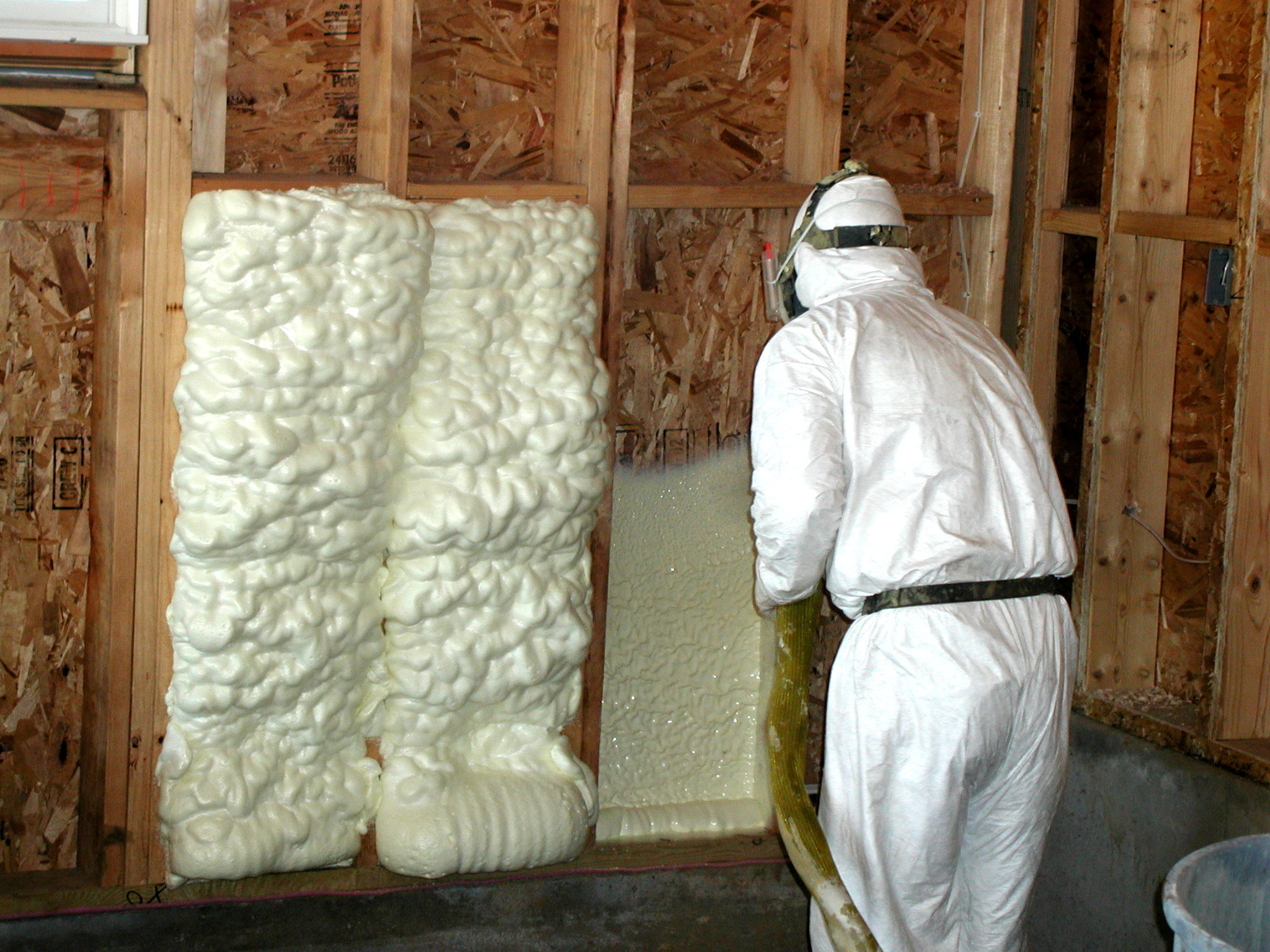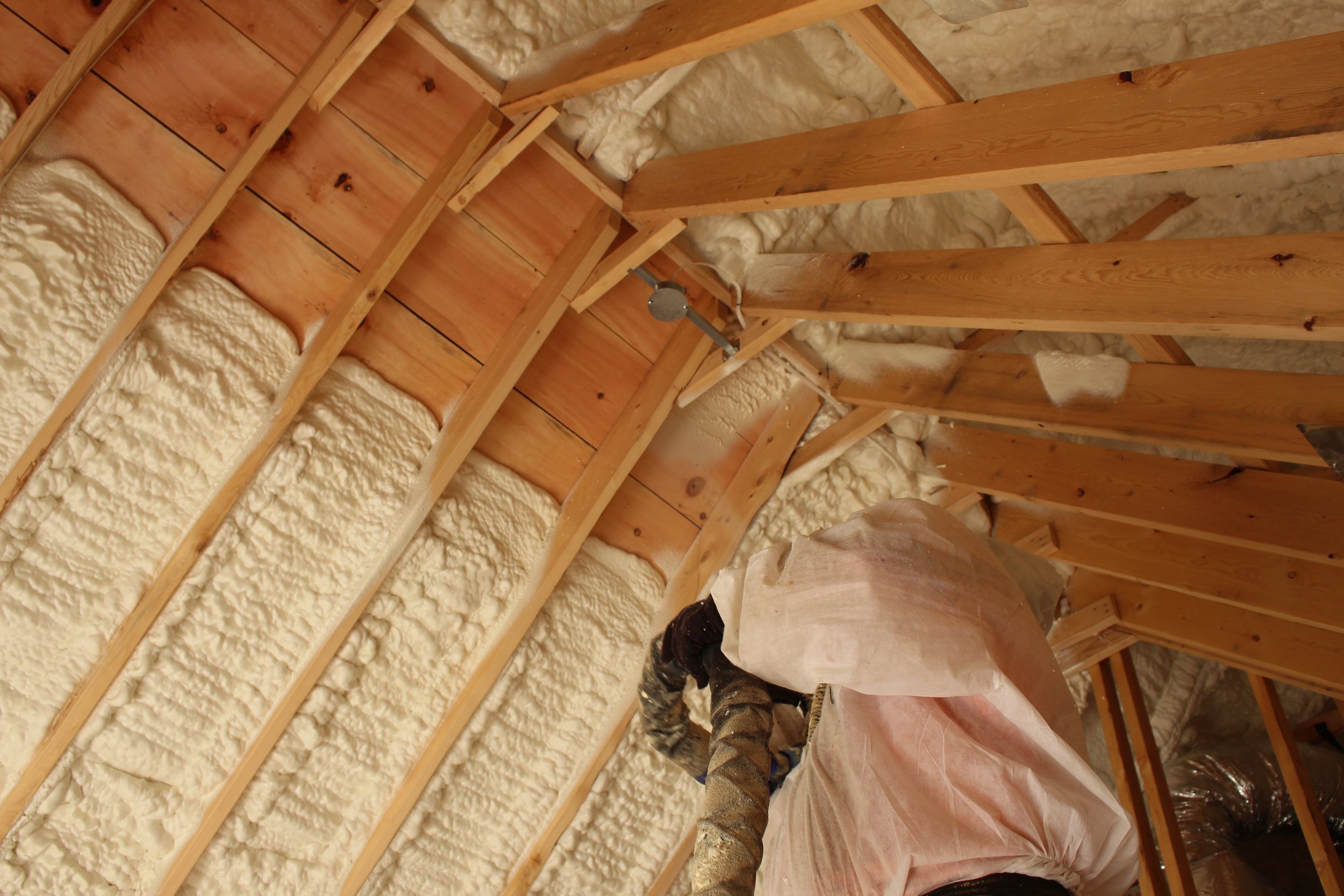How Spray Foam Can Boost Power Efficiency in Your Home
How Spray Foam Can Boost Power Efficiency in Your Home
Blog Article
Spray Foam: The Ultimate Solution for Air Sealing and Insulation
Spray foam insulation has actually become a leading solution for efficient air securing and thermal insulation, supplying a distinct mix of properties that set it in addition to conventional approaches. Its capacity to expand and fill up voids makes it specifically efficient in protecting against air leak, which can significantly impact energy performance. Comprehending the complete extent of its advantages, installment procedures, and comparisons with other insulation types is vital for making educated choices. As we discover these aspects, the implications for both new building and constructions and retrofits end up being progressively considerable. What elements should influence your option?
What Is Spray Foam?
Spray foam is a versatile insulation material that combines the principles of air securing and thermal resistance to boost energy effectiveness in buildings. Made up largely of polyurethane or other similar substances, spray foam is applied as a liquid that increases upon call with surface areas, developing a strong, constant layer of insulation. This distinct property enables it to load voids, cracks, and gaps that standard insulation materials might neglect, giving a superior air seal.
There are two main kinds of spray foam: open-cell and closed-cell. Open-cell spray foam is lighter and much more flexible, using outstanding noise absorption and a lower R-value per inch - Spray Foam. In comparison, closed-cell spray foam is denser, offering a greater R-value, moisture resistance, and included structural honesty to developing components
The application procedure normally involves specific tools, guaranteeing a seamless application that sticks to numerous substrates, consisting of timber, metal, and concrete. This flexibility makes spray foam suitable for both new building and constructions and retrofitting existing structures. Its capability to develop an airtight barrier dramatically contributes to lowering energy consumption and enhancing interior air quality, thus making it a favored selection among building contractors and property owners alike.
Advantages of Spray Foam Insulation
One of the most considerable advantages of spray foam insulation is its extraordinary capacity to develop a continual air obstacle, which successfully lessens power loss. Unlike traditional insulation materials, spray foam broadens to fill up spaces and fractures, making certain that air leak is significantly decreased. This characteristic not only enhances energy efficiency but also leads to decrease energy bills over time.
In addition, spray foam insulation gives superior thermal resistance, adding to a more stable indoor environment. Its high R-value per inch permits reliable insulation in constrained areas, making it suitable for attics, walls, and crawl spaces. The moisture-resistant residential or commercial properties of spray foam help prevent mold and mold growth, promoting much healthier living problems.
One more critical advantage of spray foam insulation is its sound-dampening top qualities (Spray Foam). It efficiently decreases noise transmission between rooms, developing a quieter and a lot more comfortable home setting. The durability of spray foam additionally sticks out, as it does not sag or resolve gradually, maintaining its efficiency throughout its lifespan
How Spray Foam Functions
Comprehending just how spray foam insulation works is crucial for valuing its effectiveness in air securing and thermal resistance. Spray foam insulation includes 2 main elements: isocyanate and polyol resin. When these components are mixed, they undertake a chemical response that triggers the material to expand quickly, developing a dense foam that fills splits, gaps, and cavities.
As the foam expands, it follows surfaces, creating a closed seal that substantially lowers air infiltration. This characteristic makes spray foam insulation extremely reliable at avoiding drafts and moisture penetration, which can result in power loss and damages gradually. In addition, the closed-cell variant of spray foam provides remarkable thermal resistance as a result of its inflexible structure, efficiently reducing warmth transfer.
The one-of-a-kind buildings of spray foam permit it to conform to irregular surfaces, guaranteeing comprehensive protection and a smooth barrier. Therefore, spray foam insulation not only enhances power performance yet additionally adds to boosted interior air top quality by lowering the build-up of toxins and irritants. Inevitably, recognizing the technicians behind spray foam highlights its function as a remarkable option for insulation and air sealing in both commercial and residential applications.
Installment Process Overview

Before installment, the space needs to be effectively cleaned and prepped, making certain that surfaces are complimentary from particles, dirt, and moisture. Since contaminants can compromise bond and total efficiency, this step is important. As soon as the location is prepared, the application entails mixing the 2 parts of the spray foam, which expands upon contact and fills up spaces effectively.
Educated experts must carry out the setup, utilizing customized tools to ensure uniform insurance coverage and ideal thickness. Safety preventative measures, consisting of wearing protective gear and guaranteeing correct air flow, are important during this process. After application, the foam typically cures quickly, forming a strong obstacle that improves energy efficiency.
Contrasting Spray Foam to Typical Insulation
When reviewing insulation alternatives, spray check my blog foam insulation stands out in comparison to conventional materials such as fiberglass and cellulose. Unlike fiberglass and cellulose, which can allow air infiltration, spray foam increases upon application, filling up holes and gaps to develop an impermeable seal.
In addition, spray foam supplies a higher R-value per inch than conventional insulation kinds, providing more reliable thermal resistance in a thinner profile. This particular is specifically beneficial in areas with restricted tooth cavity deepness. Spray foam is resistant to moisture and mold development, which can be a significant problem with cellulose and fiberglass, particularly in damp settings.
Nevertheless, spray foam insulation typically carries a greater in advance price than its standard equivalents. Property owners need to consider this first investment against long-term energy savings and performance benefits. Inevitably, while both insulation types serve their function, spray foam emerges as an advanced option for modern-day insulation demands, especially in regards to air sealing and thermal effectiveness.

Final Thought
In summary, spray foam insulation stands for a highly reliable remedy for accomplishing optimal air securing and thermal resistance. Its unique properties, including moisture resistance and noise dampening, make it ideal discover here for various applications in both new building and constructions and retrofitting projects (Spray Foam). The initial prices might be greater contrasted to standard insulation materials, the long-term advantages, such as considerable energy savings and boosted indoor air top quality, warrant the financial investment and underscore its worth in modern-day structure methods.
Spray foam insulation has actually emerged as a leading remedy for reliable air sealing and thermal insulation, providing a distinct mix of residential or commercial properties that set it apart from conventional techniques.Spray foam is a flexible insulation material that integrates the principles of air securing and thermal resistance to enhance energy efficiency in structures.When assessing insulation alternatives, spray foam insulation stands out in comparison to typical materials such as fiberglass and cellulose. Inevitably, while both insulation types offer anonymous their purpose, spray foam emerges as an extra sophisticated remedy for modern insulation demands, particularly in terms of air sealing and thermal performance.
In summary, spray foam insulation stands for a very efficient option for achieving ideal air securing and thermal resistance.
Report this page